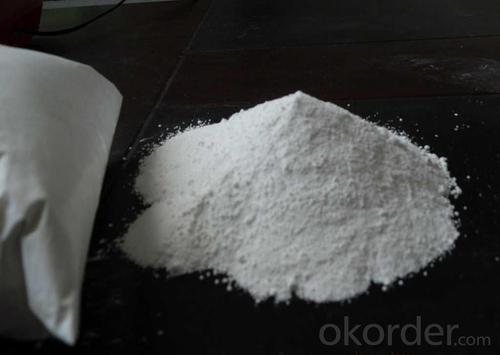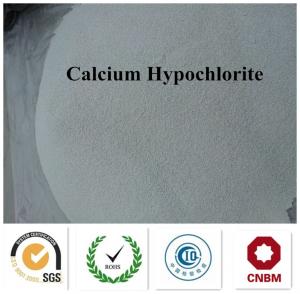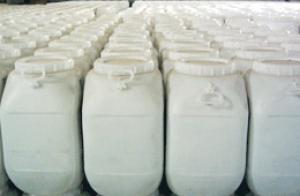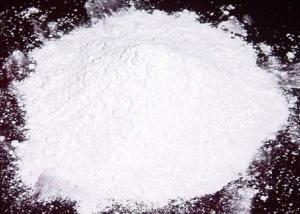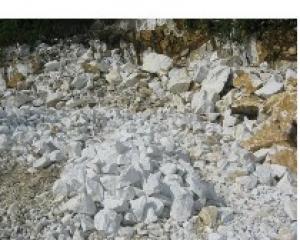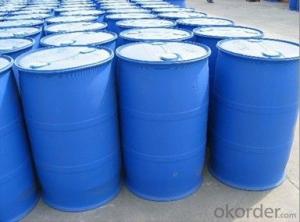Nano Precipitated Calcium Carbonate
- Loading Port:
- China Main Port
- Payment Terms:
- TT or LC
- Min Order Qty:
- 16 tons m.t.
- Supply Capability:
- 300000 tons m.t./month
OKorder Service Pledge
OKorder Financial Service
You Might Also Like
Nano Calcium Carbonate is one kind of Coated Precipitated Calcium Carbonats(PCC), also called Nano Precipitated Calcium Carbonate(NPCC). We can produce standard precipitated calcium carbonate in different whiteness, purity and fineness according to buyer’s demand.Nano Calcium Carbonate(NCC) as a functional inorganic material or reinforcing agent widely used in all kinds of industrials.Precipitated Calcium Carbonate is a kind of functional fillers which can be used in adhesives&sealants, rubber, plastic, paint, ink, food, etc.
Applications of Nano Precipitated Calcium Carbonate:

The precipitated calcium carbonate is almost always used for a raw material of following goods.
- Plastic: Pipe, Electric wire, Vinyl sheet, Parts of Electric product, Parts of Automobile, Toy, Film, Garbage bag, Container, Tableware, Food Tray, Dish Tray, Toilet table, Bedpan, Chair,ect.
- Rubber: Chemical shoes, Electric cable, Tire, Belt, Hose, Rubber paste, Rubber glue, ect.
- Paint & Coating: Interior, exterior emulsion paint, ect.
- Paper: Art paper, Coating paper, Gravure paper, High quality paper, Medium quality paper, Rice paper, Poster, ect.
- Building Material: Artificial marble, Floor board, Wall board, ect.
- Adhesive, Printing ink, Compound, Glass, Ceramics, Agricultural purpose, Feed, Toothpaste, Soap, Cosmetics, Chalk, Colors, ect.
Specifications of Nano Precipitated Calcium Carbonate:
1.Calcium Carbonate:96-98%
2.Average particle size :50-80nm
3.Whiteness: above 90
4.Activation Grade: 98-99.5
Activated Nano Precipitated Calcium Carbonate



- Q: The presence of inorganic salts
- The presence of inorganic salts is mostly present in the ionic state in a small number of compounds
- Q: What is inorganic salt? Lemon flavor, citric acid, is it an inorganic salt?
- Although the inorganic salt in the cell, the body content is very low, but the effect is very large, if the attention of diet diversification, eat less animal fat, eat brown rice, corn and other coarse grains, do not eat too much refined flour, Salt to maintain the normal level of citric acid is an important organic acid, also known as citric acid, no ...
- Q: What cells produce the collagen and inorganic salts of bone matrix?
- The collagen is produced by chondrocytes. The minerals that make up the bone are precipitated by osteoblasts.
- Q: What are the important physiological functions of inorganic salts in cells
- Inorganic salts are important for the structure of tissues and cells. Hard tissues such as bones and teeth are mostly composed of calcium, phosphorus and magnesium, and soft tissue contains more potassium. The inorganic salts in the body fluids regulate the permeability of the cell membrane, control the moisture, maintain normal osmotic pressure and acid-base balance, and help transport the common elements to the whole body, participate in nerve activity and muscle contraction. Some are inorganic or organic compounds that are involved in many important physiological functions of constituents, hormones, vitamins, proteins and nucleic acids that make up enzymes, or as activators of various enzyme systems. For example: to maintain the heart and brain activity, to help the formation of antibodies, play a useful role in the human body.
- Q: The human body does not intake of minerals can be? Lack of minerals on the human body what kind of harm?
- Minerals, such as calcium, phosphorus, potassium, sodium, chlorine and other minerals, iron, zinc, copper, manganese, cobalt, molybdenum, selenium, iodine, chromium and other small amount of trace elements. But no matter which elements, and the human body compared to the protein, are very small.
- Q: Is calcium carbide inactive?
- Calcium carbide, the chemical formula for the CaC2, not inorganic salts. Salt refers to the metal ions and acid ions of the compound, calcium carbide does not have the corresponding acid.
- Q: I had asked a similar question on GC operation last week, but for different kinds of compounds.For my biochem research project at school, I'm testing the ability of a species of bacteria to biodegrade alcohols found in gasoline (methanol, ethanol, isopropyl, tert-butyl and cyclohexanol). The bacteria is growing in a solution of minute amounts of alcohols and Mineral Medium, which is basically just water and dissolved inorganic salts (CaCl2, KH2PO4, NH4NO3 and MgSO4).I know GC's are primarily used to separate organic mixtures. Can a GC separate organic compounds dissolved in salt water? Is it safe to put salt water in a GC? Or would I have to do an extraction to separate the alcohols and run the organic extract through the GC?
- Do not let salts enter the GC. You will have to perform an extraction step and run that. Salts can precipitate in the column or degrade into reactive species that can corrode the GC. Water is OK since it will not destroy the column (I've run aqueous solutions before), but salts are not.
- Q: Inorganic salts are not nutritious
- Nutritional substances are sugar protein fat three nutrients
- Q: As if there are two kinds of nitrogen, phosphorus and potassium, hoping to get answers and explain their respective roles
- According to the study, three essential conditions for determining the essential nutrient elements of the plant are: (1) This element is essential for the vegetative growth and reproductive growth of the plant. When it is completely absent, the plant can not complete its life cycle; The need for such elements is specific, other elements can not replace its role, the lack of plants will be a special lack of symptoms, only to meet this element, the symptoms will be eliminated; ⑧ this element must be in the plant from the body Direct effect, not just to improve the plant growth environment indirect role.
1. Manufacturer Overview
| Location | Anhiu,China |
| Year Established | 2007 |
| Annual Output Value | |
| Main Markets | North America, Southeast Asia, Africa, Mid East, Eastern Asia, Western Europe, Northern Europe |
| Company Certifications |
2. Manufacturer Certificates
| a) Certification Name | |
| Range | |
| Reference | |
| Validity Period |
3. Manufacturer Capability
| a) Trade Capacity | |
| Nearest Port | Tianjin |
| Export Percentage | |
| No.of Employees in Trade Department | |
| Language Spoken: | English, Chinese |
| b) Factory Information | |
| Factory Size: | |
| No. of Production Lines | |
| Contract Manufacturing | |
| Product Price Range | |
Send your message to us
Nano Precipitated Calcium Carbonate
- Loading Port:
- China Main Port
- Payment Terms:
- TT or LC
- Min Order Qty:
- 16 tons m.t.
- Supply Capability:
- 300000 tons m.t./month
OKorder Service Pledge
OKorder Financial Service
Similar products
Hot products
Hot Searches
Related keywords



